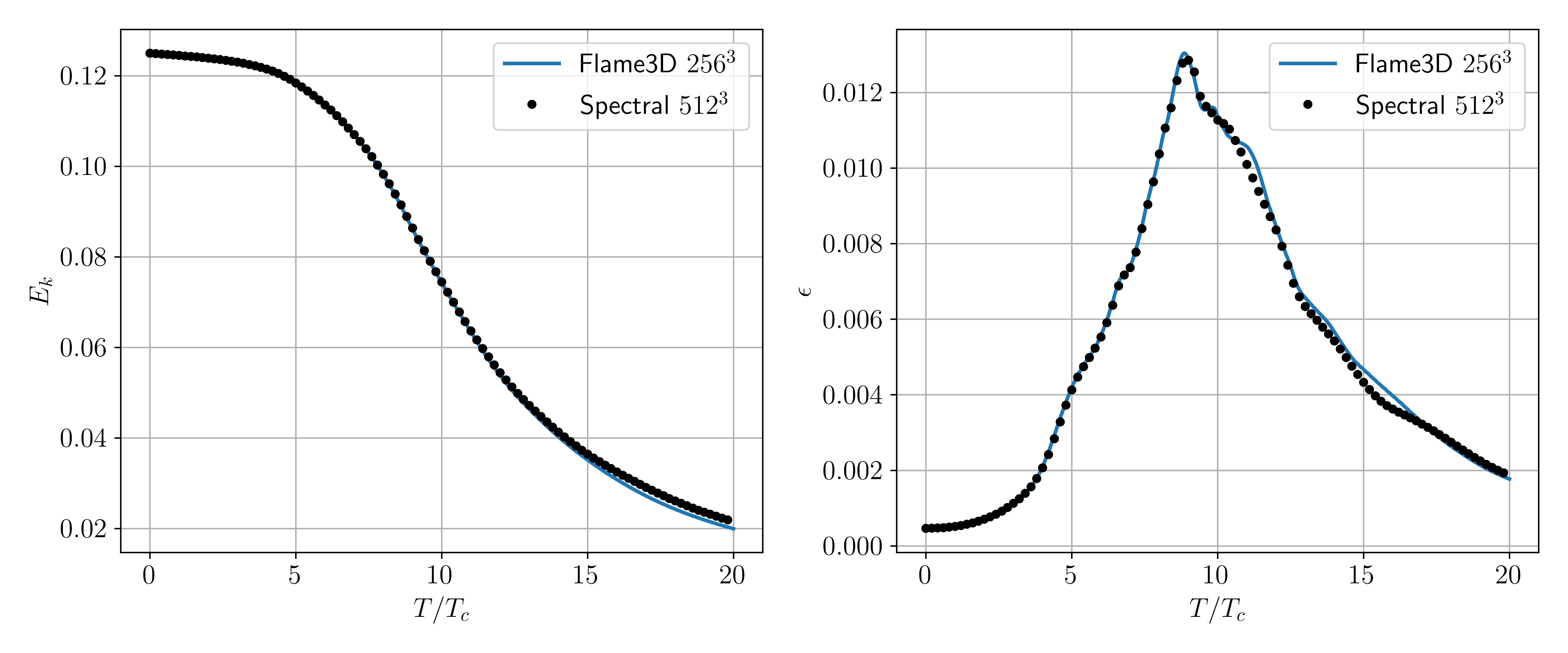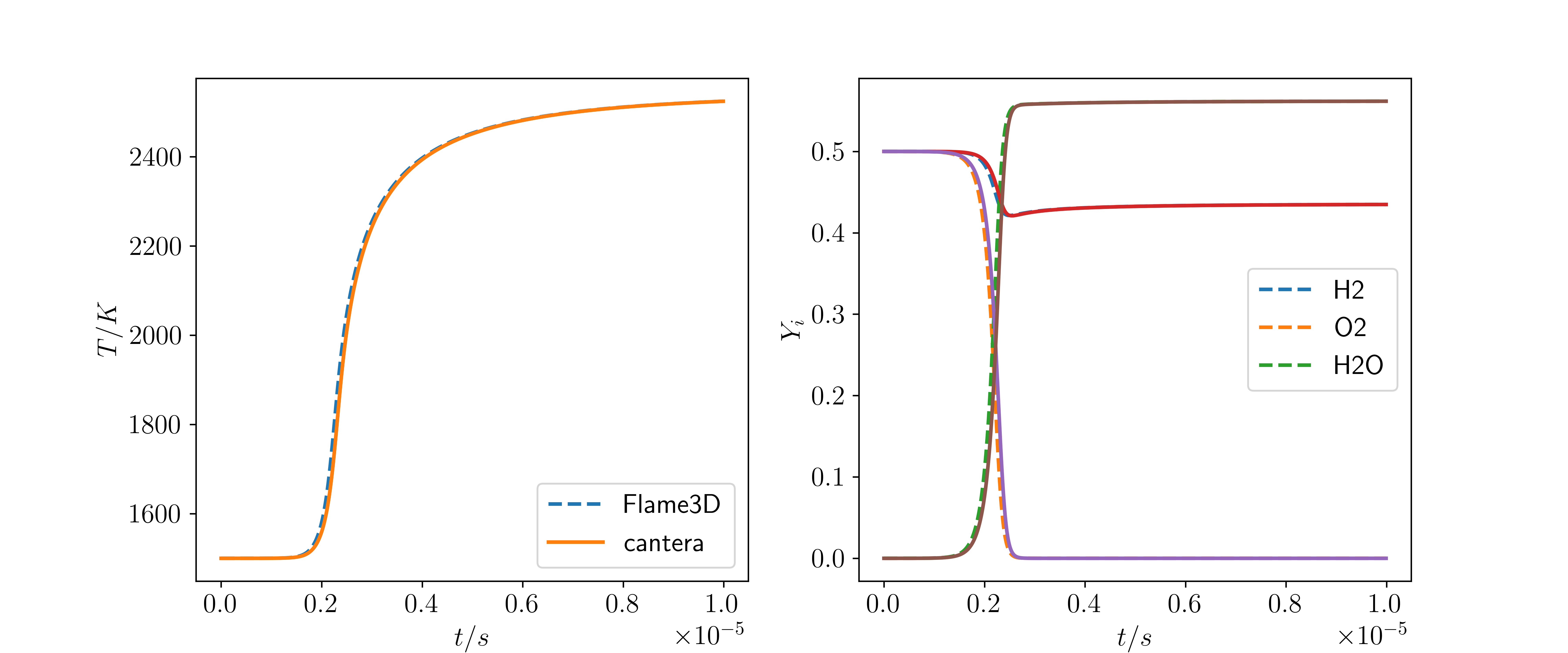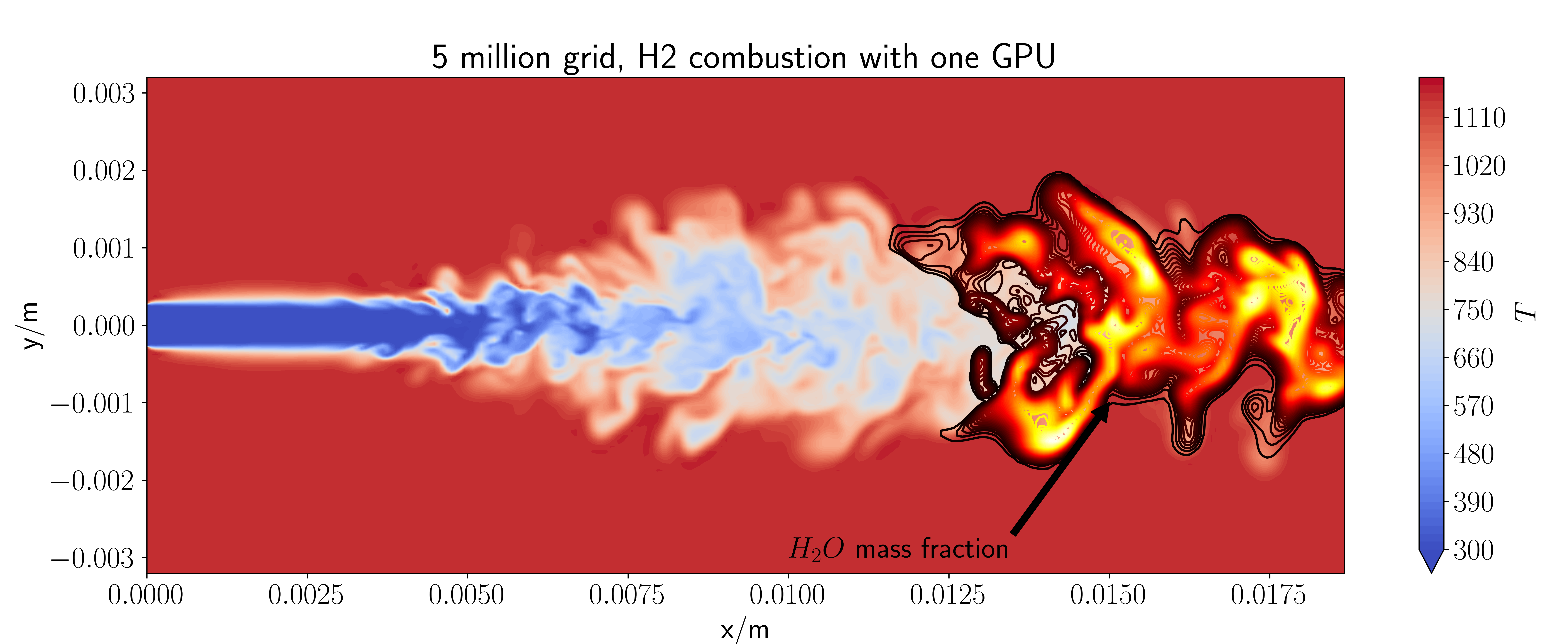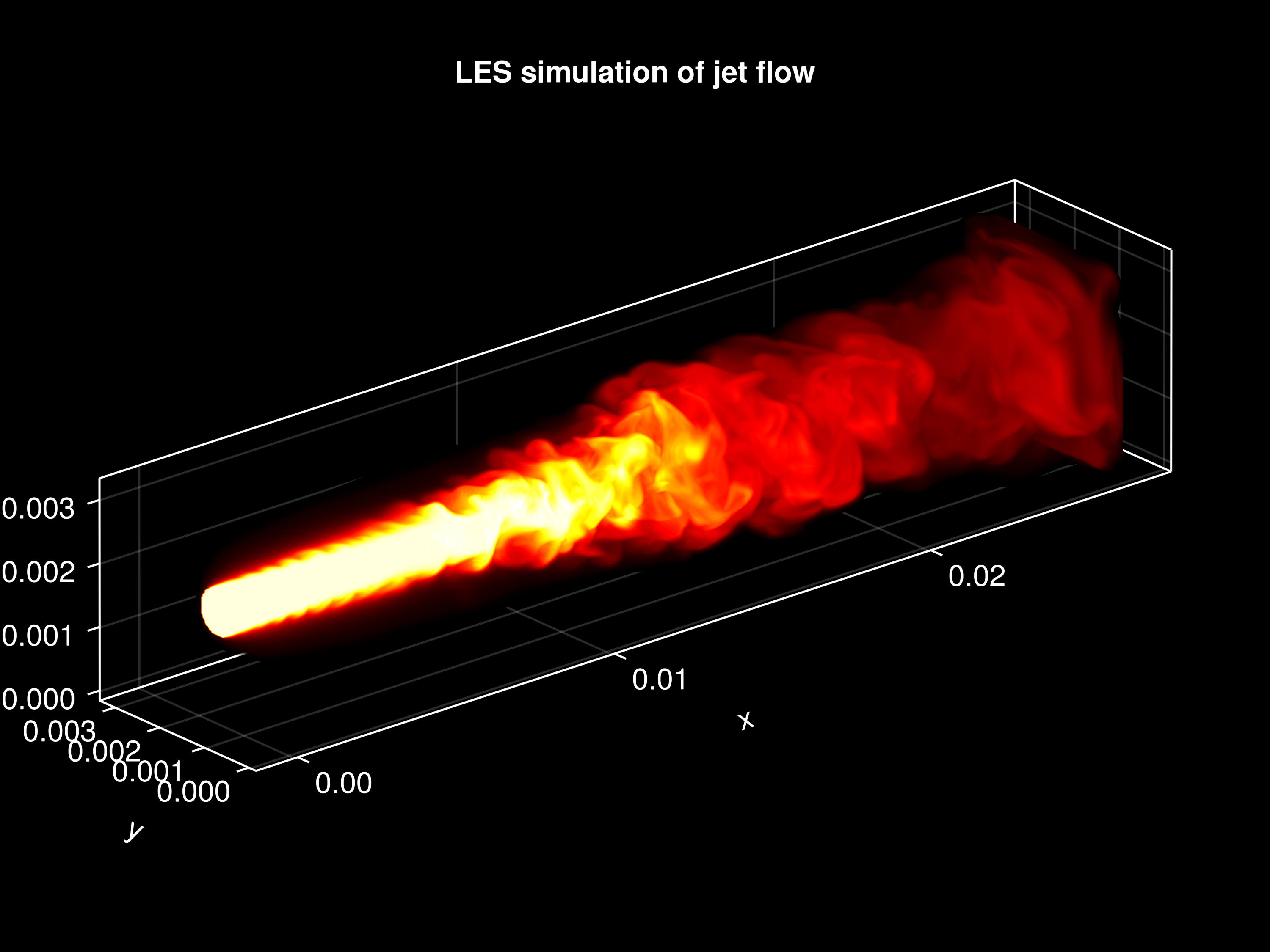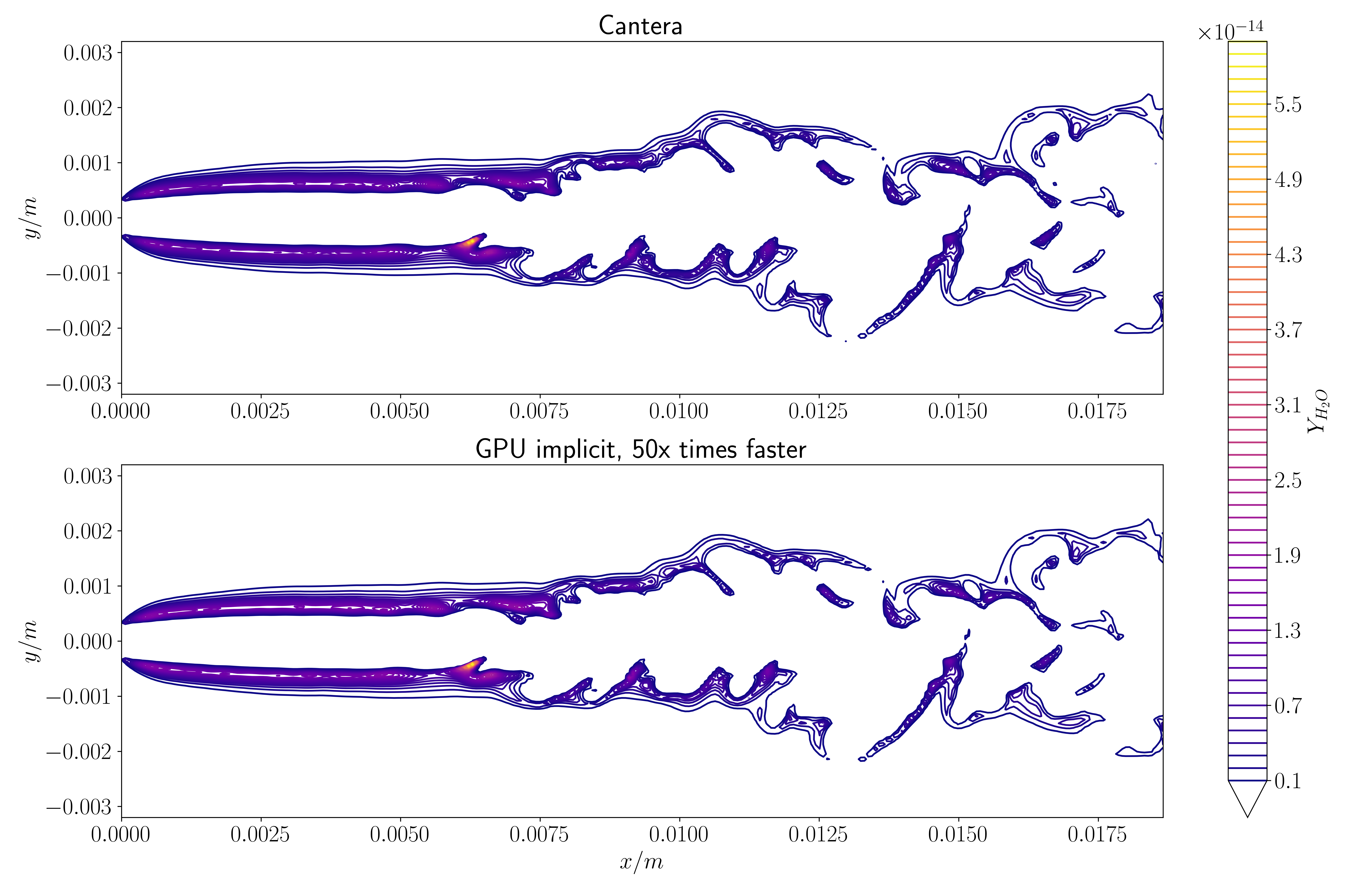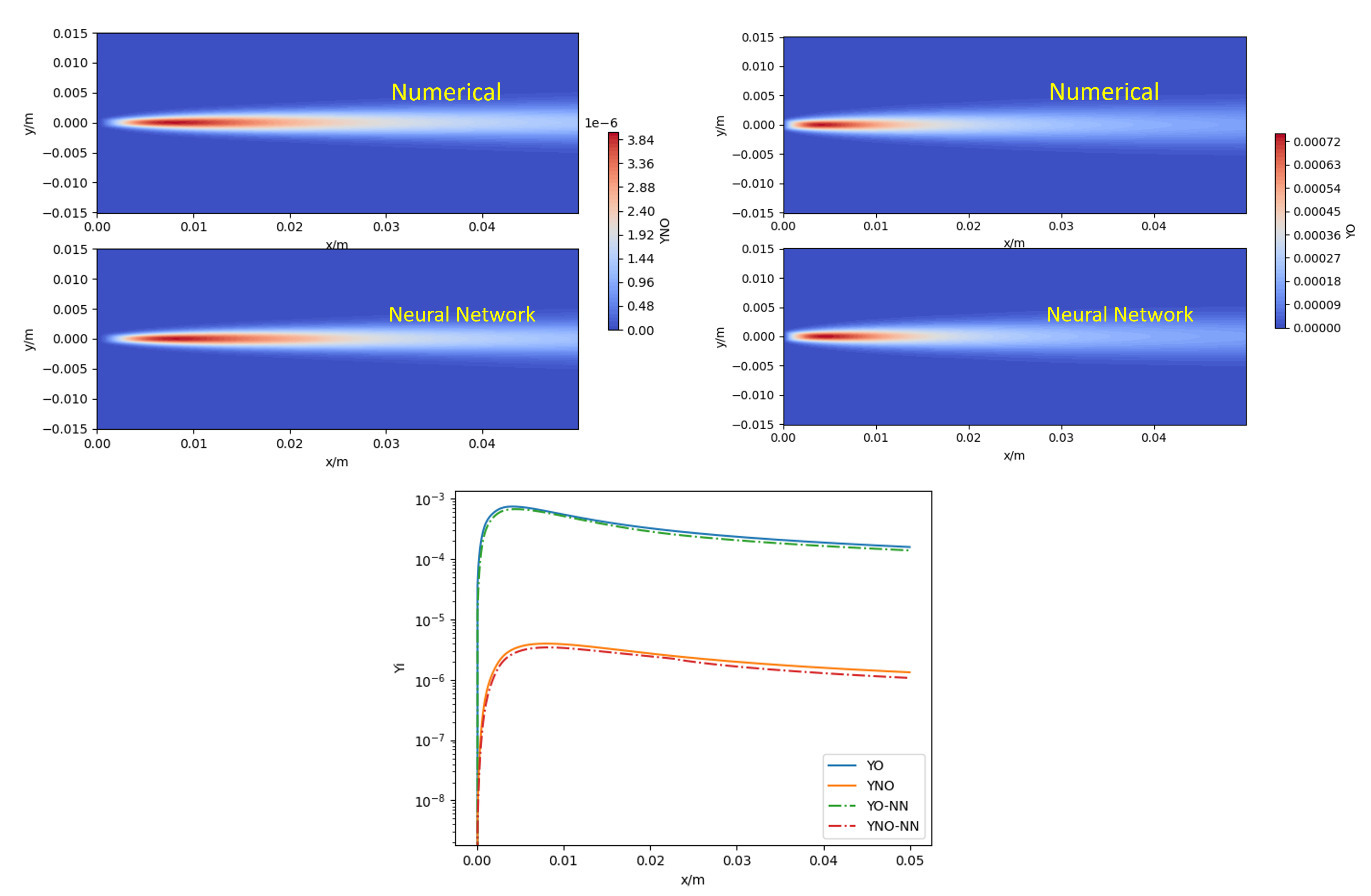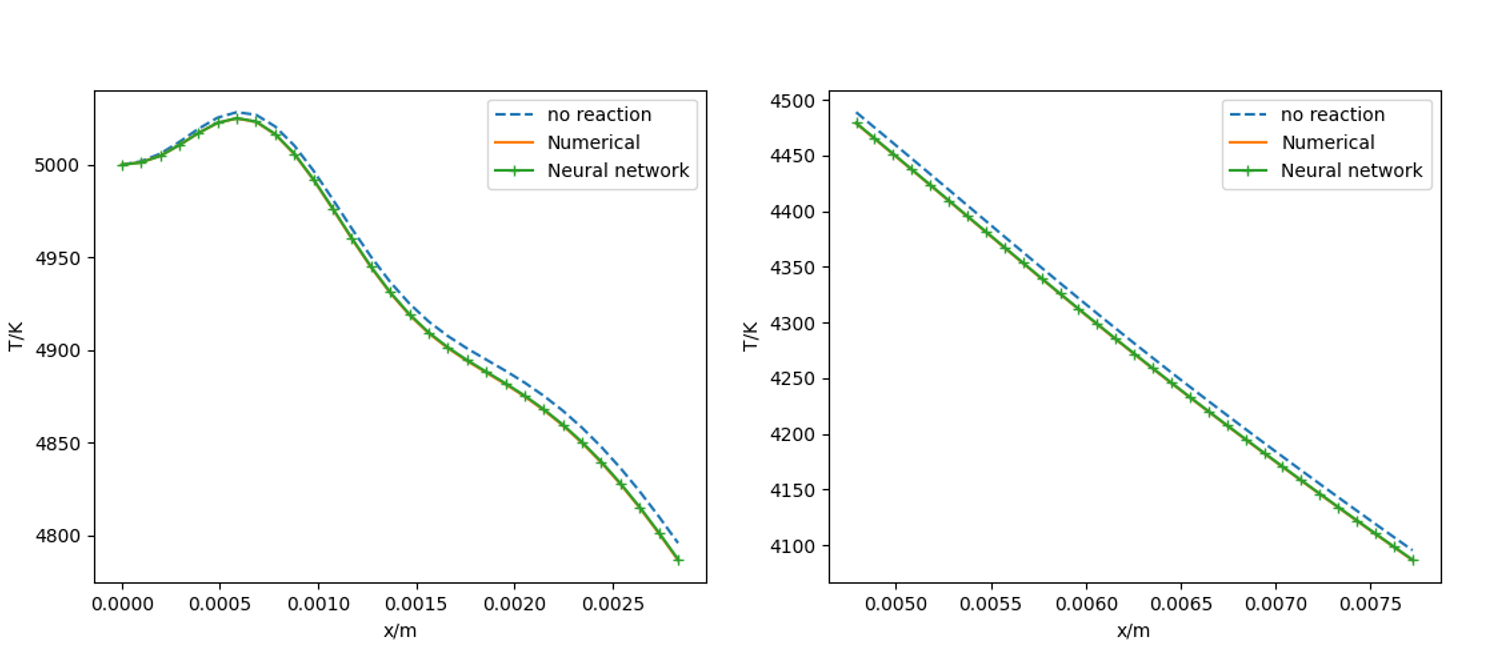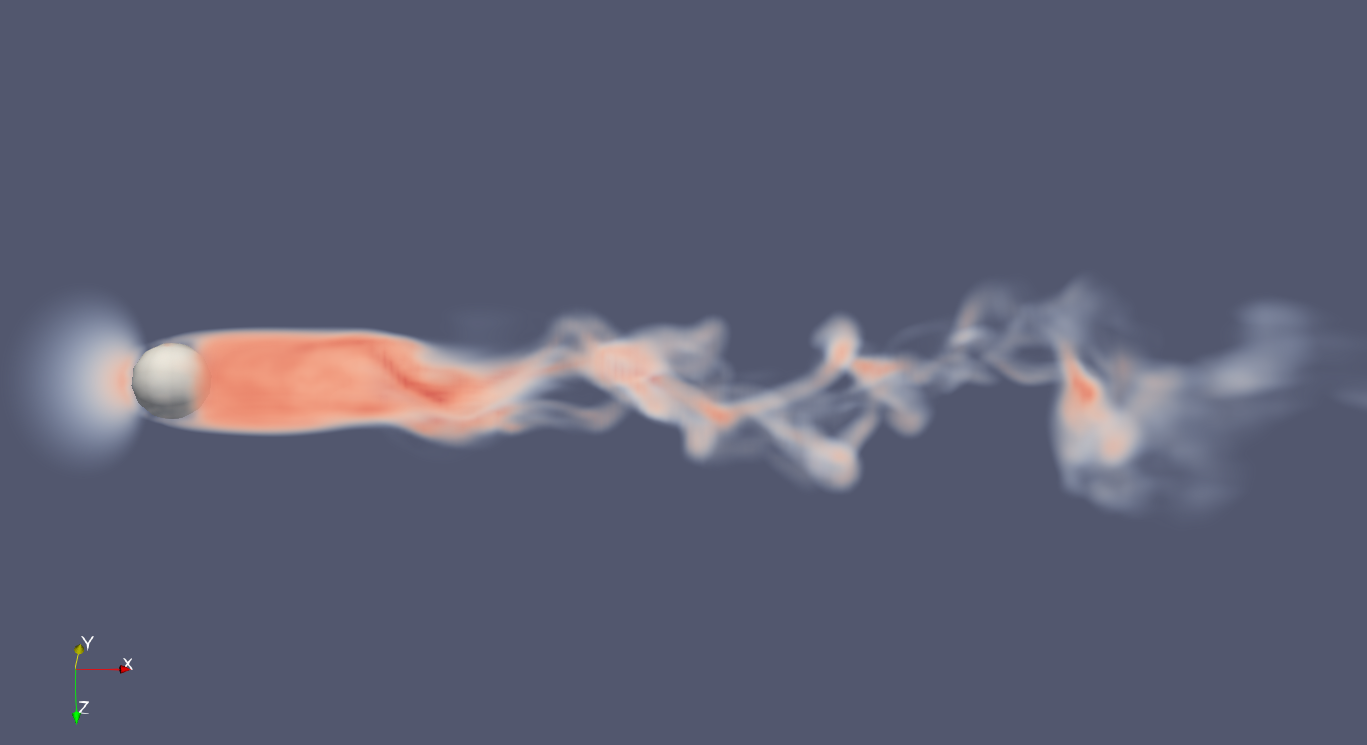FLuid And Machine learning Engine 3D
Code for compressible flow simulation with neural network for real gas and chemical reaction.
- Use
CUDA.jl,AMDGPU.jlandMPI.jlfor multi-GPU parallelization - 3D, with high order scheme (up to 7th order)
- LES modeling for complex flows
- Use
Lux.jltrained neural network model for chemical reaction prediction - GPU kernel for fast chemical reaction evaluation
- Call
Canterato parse the input file, easy to use - Call
Canterafor chemical reaction evaluation, either Python or C++ interface - Use
HDF5andVTKfor I/O - Use
matplotlib,Makie.jlorParaviewfor post-processing - Use immersed boundary method on curvilinear coordinates to represent complex geometry (work in progress)
- Be able to simulate incompressible flow efficiently (work in progress)
Generate mesh and metrics with
julia parse_mesh.jl
It will compute metrics and store it to metrics.h5, if you want to visualize the mesh, make sure const vis::Bool = true, then the mesh.vts file can be opened with Paraview, etc.
Run the simulation with
julia run.jl
Or to use multi-GPU, make Nprocs=<nprocs> and run it with mpiexecjl -n <nprocs> julia run.jl.
For more details, checkout the comments in run.jl.
For post-processing, a sample code is provided in Utils/plot.jl. It can be used to visualize and analyze the result. Alternatively, Paraview or Makie.jl can also be used for 3D rendering.
Entropically damped form of artificial compressibility for explicit simulation of incompressible flow
